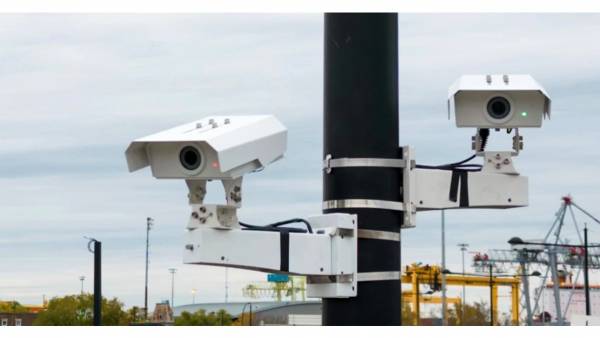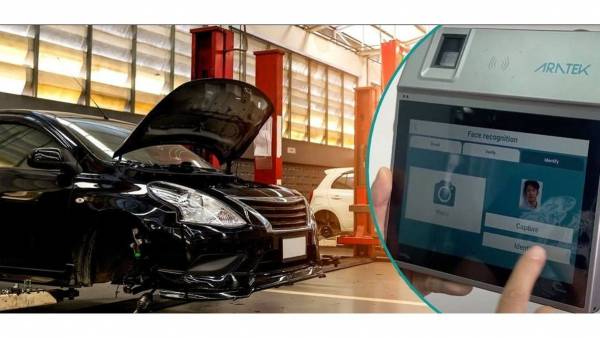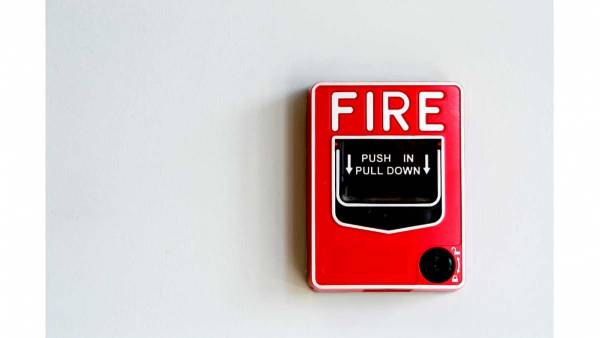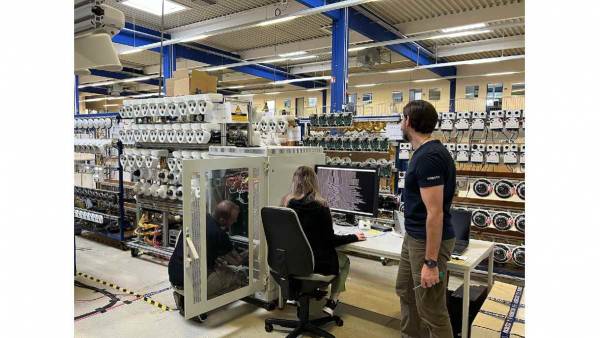by Michael Meissner
To market these products successfully, manufacturers usually burden customers who do not know the market with empty slogans and technical phrases that the user simply cannot evaluate correctly due to their lack of experience.
The general idea that new digital (IP) technologies are better as such than old analog technologies is not strictly correct. As usually happens in life, there are two sides of the coin: both technologies have their advantages and disadvantages, and must be analyzed individually, depending on the application or the intended use with the video monitoring equipment.
Advantages of digital technology
•A higher resolution may be possible, depending on the product, allowing you to have details that will be recognized more easily.• Digital zoom is possible using a mega-pixel camera.
•The rear expansion of the camera system, as well as the single camera, can be performed using all-digital system solutions.
•There is less noise (video and control) on the lines during the digital transmission of signals.
•If the system is small, the existing network can be used (after a pre-check) without causing any performance damage when operating the hardware and software within the network.
•Live or archival images may be available to all users with appropriate access rights within the network, on their workstations.
•In all-digital system solutions, video storage capacity depends solely on the size of the hard drive(s) on the server.
Disadvantages of digital technology
•Currently, most IP cameras are inferior to cameras with respect to light sensitivity, low light color fidelity, dynamics, and resolution (if the camera is not a mega-pixel camera).
•The frame rates of mega-pixel cameras that have to transfer and store frames with the highest resolutions generally cannot be achieved in real time due to the significant increase in data volume.
•The appropriate lens selection for mega-pixel cameras is still very limited. It takes time for all current zoom lenses to be available for mega-pixel use.
•IP cameras from different manufacturers are not compatible with each other. This means that if you want to make a replacement of important technical components (e.g. HDVR, NVR) or video management software (say after a period of two years), it is much more difficult than when using analog cameras that work with standardized PAL signal (therefore, they become compatible with each other).
•Due to lack of compatibility, IP cameras must be integrated into multi-vendor hardware and/or software platforms. By the design of the system, this usually results in a limitation in function during the integration process, since all the technical features of the IP camera cannot always be integrated into these different platforms.
•Particularly when it comes to the full motion image compression method (example: H26x, MPEG-2, MPEG-4), there are generally extremely high latency times when operating pan/tilt heads and high-speed domes.
•Data protection costs are also much higher than when using conventional analog technology (especially when using existing networks and computers). In addition to the configuration of the video devices themselves, extra administrative time and cost must be calculated for the network configuration of routers, switches, repeaters, servers, etc.{mospagebreak}
Things to consider during installation
With the use of analog and wired video signal transmission, transmission ranges of up to 300 meters can be achieved using a single 75 ohm (0.6/3.7) coaxial cable, without any intermediate amplification. When transmitting digital video signals within local networks, intermediate amplification is required after 100 meters, this intermediate amplification within the network area is usually performed using classic components such as switches or repeaters.
During the planning and configuration phase, the cost of these components plays an important role, especially when new wiring is required. If the network cable connections for external cameras are greater than 100 meters, it is something that should be taken into account.
Understandably, the use of internal network lines in external areas has its risk, and requires additional protective measures, even if the network in question is an autonomous video network. In most cases, those who argue digital technology usually completely forget to mention the costs involved in signal amplification and additional security measures. Some IP cameras have integrated the PoE (power over Ethernet) supply modules, this ensures that the IP camera obtains the power from the existing network line. The advantage of this is clear: no separate power supply is required; however, depending on the power consumption of the IP camera, the number of cameras that can be installed by two switches using the integrated PoE function is limited.
In addition, star distribution cabling is also required for network cameras. Additionally, when using external cameras, the PoE function cannot be used due to the large distances that must be covered.
Commercial aspects
Due to the use of internal networks, many companies assign to their own IT departments the planning and acquisition of video monitoring equipment. In the past, when conventional analog technology was used, the maintenance department was usually the one assigned to this task. The fact that IT budgets are generally much higher than comparable budgets for maintenance will tend to drive the use of digital technology. If we believe in the marketing promotions of many catalogs and product reports, then the modern user should simply use digital technology, and only this one, since it is the current trend.
Next, I will test the content of such marketing statements (1-5) and put them in their full technical context, thus illustrating both the advantages and disadvantages:
1. Mega-pixel cameras have higher resolution: IP cameras that use mega-pixel image sensors actually do have higher resolution (and therefore offer more clearly structured details) than an analog CCD camera that is limited to a maximum of 440,000 pixels (due to the PAL standard). Therefore, it is possible to make a digital zoom, through which a part of the image is approached within the frame; however, the higher the pixel count, the lower the corresponding pixel, and the camera proportionally loses light sensitivity, this means that under certain circumstances more effort will have to be made and will involve more costs to achieve illumination within the area to be monitored.
Advice: Under identical conditions, compare an analog camera with a mega-pixel digital camera, directly inside the object being monitored. Pay close attention to light sensitivity and color fidelity, especially when lighting conditions are poor.
The user only benefits from a camera with a resolution of mega-pixels when that high resolution is simply not "lost" because the additional components are connected downwards for the respective transmission or recording. A good example of this is when a VGA resolution has to be converted to MPEG for reasons. of performance. Therefore, you should make sure that both the lens and the video and recording devices that have been connected support the high resolution of the camera. {mospagebreak}
2. Progressive logging is "better than frame register": The PAL method for analog cameras is based on 50 fields per second, which are then interlaced at 25 frames per second (fps). Because all 50 fields are exposed consecutively (to a compensation of 20 milliseconds per frame), rapid movements can produce a motion effect, making the monitor's still image unclear, then blurring occurs when this image is stored or printed. With digital cameras, no fields are generated.
Instead, you get full-frame, non-interlaced images; this is called progressive registration. However, in all marketing promotions the digital enthusiast generally forgets to mention that professional analog cameras have already been equipped with electronic shutter functions for almost 20 years, thus allowing them to present even the fastest movements with extreme clarity and sharpness.
Tip: If you need to detect fast-moving objects within the object you are monitoring, then leave the definition displayed on the monitor for both live image and stock image.
3. IP cameras offer better quality: The quality of an image is the result of a combination of different technical factors. Among them we can talk about resolution, color interpretation, light sensitivity, contrast, brightness, dynamics (when there is black light), depth of focus, etc., therefore, this generalized statement is not correct. In particular, IP cameras offered by manufacturers outside the CCTV branch, they are generally far inferior to analog cameras, especially in these disciplines. By the way, a webcam that costs $19, is also an IP camera.
Tip: On the object you are monitoring, compare an analog camera with an IP camera and insist that you be shown the advantages. Finally, you are the person who decides whether the image quality of an IP camera is really better or not. And don't forget: cameras must also be able to offer acceptable images at night under low light conditions or in artificial light.
4. IP cameras can be easily integrated into existing networks: This statement is real when the administrator responsible for the system has first fixed all the problems around the topics of "network security" and "network loads". If video systems are already built into the network, then it is relatively easy to increase the number of cameras. Be careful when you hear the following: "Camera locations can be easily installed or changed by simply connecting the camera to the network jack or disconnecting it."
This statement is only true when the mains lines and sockets have already been installed in all planned locations of the internal cameras (usually in the corner of the room at ceiling height).
Tip: Include your solution manager early on in planning your network-based video monitoring system. {mospagebreak}
5. Digital systems, installed more easily and at a lower price: This version is only correct when the number of IP cameras is so limited that the existing network does not suffer disturbances or even presents failures due to its inherent bandwidth limitation after the extra load is added from the video monitoring equipment. However, if you plan to use many IP cameras, then, for security reasons, you should also plan a separate network exclusively for the application of video. If you have to completely rewire for this reason, then digital systems are no longer easier and less expensive to install. If the separate network lines as well as the 75 Ohm coaxial cable have not yet been installed in the planned place of the cameras, then you can also transmit the analogue of video signals: using low-priced two-wire video transmitters and receivers, on existing telephone cables, where we can find pairs of wires still unassigned.
Tip: The higher the image quality you need, the greater the network load of the video monitoring equipment. However, you can considerably reduce the load on the network by using analog cameras, if they are incorporated into the local network through a digital player (DVR). If you are using the conditional compression method of the DVR with adjustable network load, then in many cases you can integrate larger video monitoring systems to existing networks. All users with access rights can then access all cameras for live or archival images from their computers, even when using analog cameras.
Summary
Depending on the application and the reason you have to monitor by video, the technology to be used must be carefully analyzed, and focused on the specific requirements of the user. Many operators have invested in video monitoring technology over the past 20 years. If you consider that in the past, in Germany alone, many hundreds of thousands of analog cameras had already been installed, you can quickly come to the conclusion that systems must now be planned and installed that intelligently and efficiently support both analog camera technology and modern IP camera technology.
For this reason alone, manufacturers who have been working within the field of safety technology for a long time have developed system components to specifications, which optimally combine the best of both worlds. Modern hybrid registration and transmission systems optimally exploit the advantages of both technologies for the benefit of the customer. By the way, even in other fields of the industry, experts are of the opinion that it is the combination of the new digital world with the old analog world (tubes), which really offers the benefits to customers. Even today in Germany, analog camera technology is still used in more than 90% of cases.
Therefore, we assume that the proportion of digital video components will increase dramatically in the coming years. The "death" of analog camera technology within the next five to ten years, as prophesied by some experts, is something I simply don't see possible. Users interested in video monitoring should take the time to find the optimal camera technology to reach the location of cameras and for every task they have at hand. If these users, with all their individual requirements, switch to a security company that has a proven track record with both technologies, then the result will surely be for the benefit of customers.
*Michael Meissner, is Managing Director of HeiTel Digital Video GMBH.

























Leave your comment